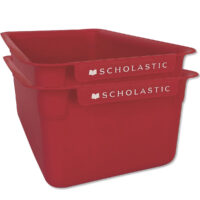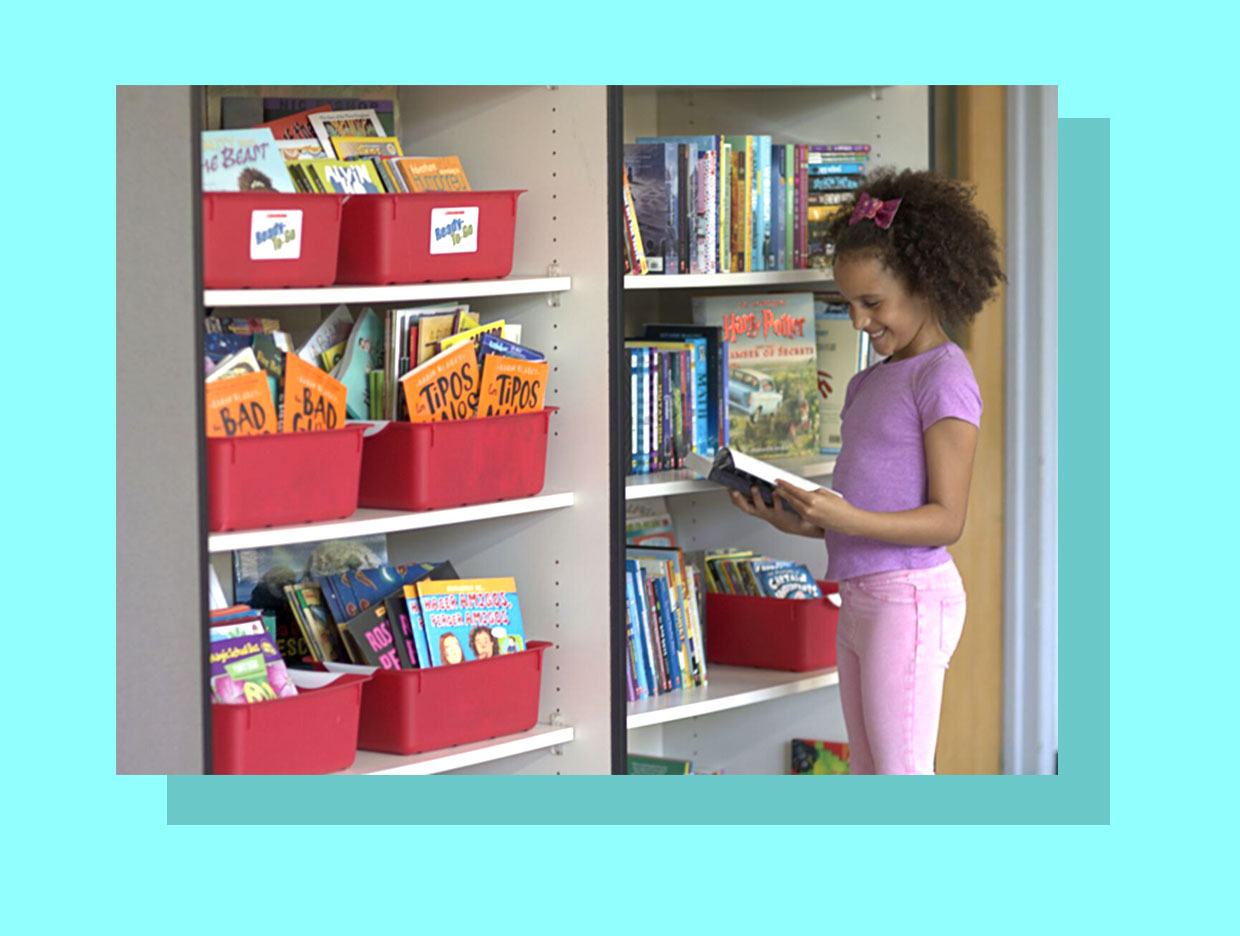5 Easy Ways to (Re)Organize Your Classroom Library in the New Year
Use these quick tips to organize your classroom library during the hustle and bustle of the holidays!
Winter break is fast approaching, and now that you’re nearly halfway through the school year, your classroom library may no longer resemble the neat and tidy learning space it was during those first few weeks of school. Books may have been damaged or put back in the wrong place. Shelves may be overloaded and sagging. Or maybe you’ve noticed a few class favorites with torn or dogeared pages ready to be replaced.
There are many budget-friendly options that will add value to your classroom library. Additionally, setting up a ClassroomsCount™ campaign is a great way to raise funds to get new books for your students. No matter what state of disorder your classroom library may be in, the new year is the perfect time to rethink how it’s organized.
1. Remove and Replace Books
By now, you know exactly what topics will capture the attention of your readers and the books and series they can’t wait to get their hands on. Do a quick inventory of the books currently on your shelves, removing those that no longer pique the interest of your current class of readers and replacing them with fiction and nonfiction reads that will not only engage your students, but will challenge them as readers and inspire them to think critically.
Check out the book list 100 Amazing Books Under $5 for many great options. There are also engaging books under $5 for every grade that will provide your students a vast variety of books to choose from, as well as boost their reading skills.
Make sure you’re fully stocked with books that your reluctant readers will love, too. The most effective way to help students boost their reading skills is by giving them the opportunity to read books centered around the things they love and care about. Whether you add a few graphic novels, classic chapter books, or best-selling series, always keep your audience in mind.
2. Consider Storage Alternatives
Shelves lined with books sorted by topic and genre may be your go-to strategy for organizing books, but shelves can quickly become disorganized and so tightly packed your students can’t pull the book they want off the shelf.
Classroom library book bins with a few titles sorted by topic within fiction and nonfiction genres are a great alternative because you’ll no longer have to reorganize and reshelve individual books on a daily basis. With bins, you can quickly arrange and organize your library by easily moving groups of books around and putting them in their proper place.
3. Reassess Your Check-Out Procedure
A fresh year is also a great time to assess your check-out system. Do your students understand the proper procedure for checking out and returning books from your classroom library? Is there anything you can do to streamline the process and make it more efficient? Have some books not been returned? These are just a few questions you can ask yourself while you revisit your system for checking out books.
One simple solution is to use a pocket chart, assigning each student a pocket where they’re able to share on a note card what book they borrowed and what bin or section of your classroom library the book came from. Once students return the book, they can remove the card from their pocket and place it in a “used card” basket so you know it’s been returned.
This versatile pocket chart is a must-have for every classroom. Perfect for whole-class and small-group activities!
Pocket chart features 10 see-through plastic pockets.
It's the "mini" that makes this pocket chart a must have! Perfect for daily data, class news, classroom management, and more!
This versatile pocket chart is a must-have for every classroom. Perfect for whole-class and small-group activities!
4. Make Sure Your Classroom Library Is Cozy, Inviting, and Promotes Learning
If your classroom library is comfortable and well-organized, your students will love using it. Add some color where you can, a few bean bags or over-sized pillows for comfort, and make sure the lighting is conducive for reading.
You could also consider spicing up your library with class décor that promotes learning. Whether it’s bulletin boards to help reinforce common sight words or wall displays that help students learn character traits, adding a few of these elements will support literacy and ensure your students become strong readers.
Reinforce sight word learning with this colorful word wall set.
Help students learn to identify character traits and build vocabulary with this delightfully illustrated set.
Help students learn text structures with these charmingly illustrated anchor charts.
Reproducible pages on the back of each chart! Plastic-coated for color-fastness and durability! Write-on, wipe-off surface!
5. Get Students Involved
With books being checked out left and right, books being returned, books being misplaced, books being read over and over and over again, pages getting dog-eared or torn from overuse, your classroom library is in a state of constant flux. That’s why it’s so important to get students involved in its upkeep.
Whether you assign specific jobs or duties to students or ask for volunteers to keep it neat and tidy, inviting students to help you manage your classroom library will not only teach your students responsibility, you’ll also ensure your classroom library remains a well-organized learning resource your students will love to use!
For more strategies to keep your classroom library organized in 2023 and beyond, check out these expert tips from Scholastic’s very own senior librarian.
The Class Jobs pocket chart is a handy management tool designed to help you assign daily or weekly jobs to students.
Full-color photo cards include 10 job cards, 2 blank cards, and 2 title cards (1 blank). Also includes a 2-page activity guide.
Assigning class jobs is a snap with this charming bulletin board set. Easy fold-and-tape format creates handy pockets.
Students will be eager to help using this graphic jobs bulletin board set. Easy fold-and-tape format creates job pockets for easy assigning.


















